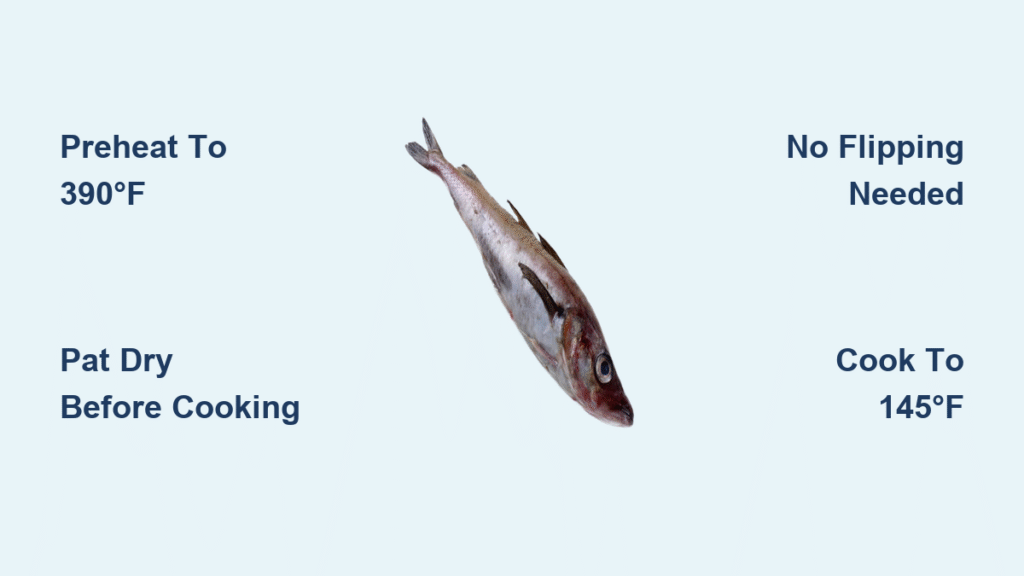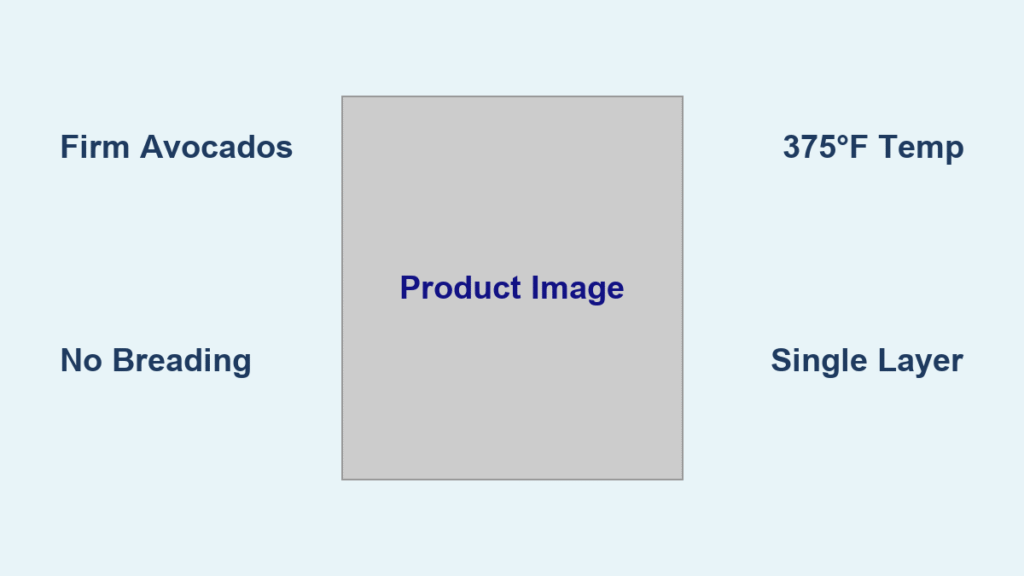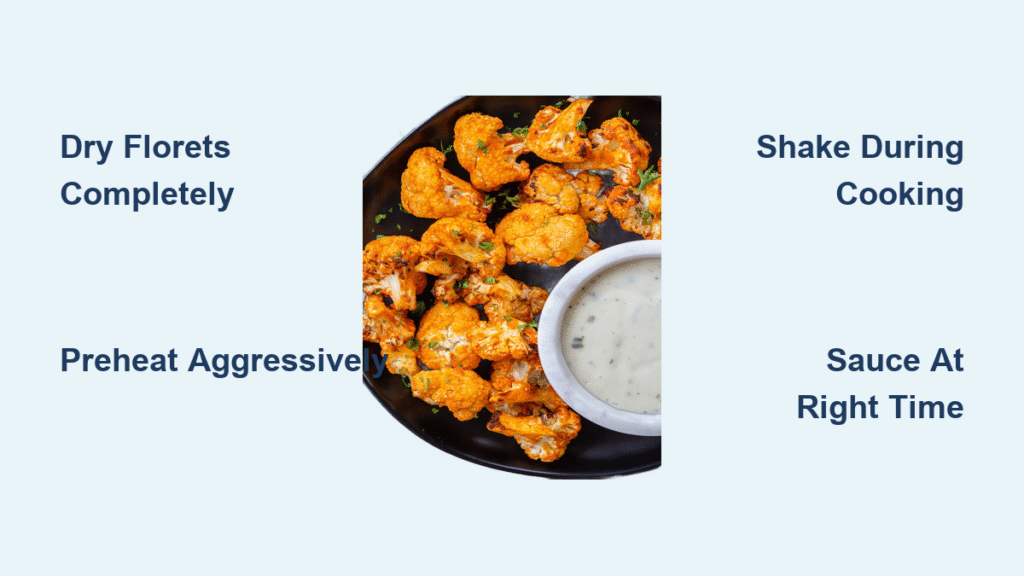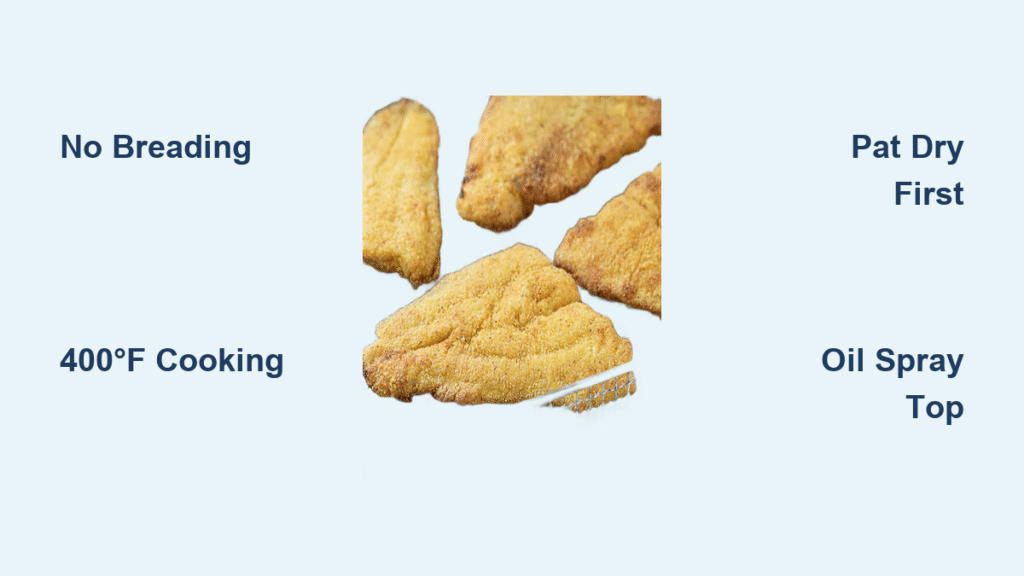Your air fryer transforms frozen Alaskan pollock into restaurant-quality fillets in under 10 minutes. This sustainable white fish cooks faster than chicken and delivers 27 grams of protein per serving with minimal cleanup. Whether you’re working with frozen fillets from Costco or fresh catch from your local market, mastering how to cook Alaskan pollock in air fryer means never suffering through dry, overcooked fish again.
Alaskan pollock’s mild flavor and firm texture make it the secret weapon of coastal bistros and fast-food chains alike. Harvested from pristine Pacific waters, this mercury-safe fish stays perfectly flaky when air-fried—no soggy bottoms or burnt edges. In this guide, you’ll discover precise temperature settings, foolproof seasoning tricks, and critical mistakes that ruin texture. Get ready for golden, restaurant-quality seafood in the time it takes to boil pasta.
Air Fryer Temperature Settings for Perfect Pollock

200°C/390°F is your golden number for flawless pollock every time. Small 70g fillets need just 4 minutes at this temperature, while thicker 5-6oz portions require 8-10 minutes. Never skip preheating—run your air fryer at 205°C/400°F for 4 minutes first. This critical step ensures immediate searing that locks in moisture while creating a light crust.
Different models need slight tweaks:
– Cosori Lite 3.8L users: Stick to 390°F for 4-5 minutes
– Ninja Foodi owners: Drop to 380°F and check 1 minute early
– Instant Pot Vortex: Use 380°F for 4-5 minutes with ample spacing
Pro tip: Place fillets skin-side down if skin-on. The intense heat crisps the skin while gently cooking the delicate flesh—no flipping needed.
Why Preheating Prevents Soggy Fish
Skipping preheating causes steam buildup from residual moisture, leaving you with rubbery, unevenly cooked fillets. A properly preheated basket instantly evaporates surface water, triggering Maillard reaction for golden browning. Test this yourself: cook one batch preheated and one cold—you’ll see the dramatic difference in texture.
Frozen vs Thawed Pollock Cooking Methods

Cooking directly from frozen saves time without sacrificing quality. But knowing when to thaw makes all the difference for thicker cuts.
Cooking Directly From Frozen
You’ll save 1-2 hours with this method. Rinse frozen fillets under cold water for 10 seconds to remove ice crystals, then pat aggressively dry with paper towels—this is non-negotiable. Moisture is the enemy of browning. Brush with melted butter or oil, season, and air fry at 390°F for 4 minutes (small) or 8-10 minutes (large). No thawing required, and results stay consistently flaky.
Thawed Fish Preparation
Thaw overnight in the fridge for best results, or use the 1-hour countertop method. Before cooking, fold thin tail ends underneath to create uniform thickness. This prevents overcooked tips while keeping the thickest part moist. Thawed fillets cook 30-60 seconds faster than frozen, so set timers accordingly. Always check for pin bones with your fingers before seasoning.
Seasoning Recipes That Elevate Flavor
Ditch bland fish with these science-backed blends. The air fryer’s rapid circulation intensifies flavors without excess oil.
Garlic Lemon Butter Blend
This classic combo prevents dryness while adding bright complexity. Mix:
– 1 tbsp melted salted butter
– ½ tsp minced garlic (fresh, not powder)
– 1 tsp fresh lemon juice
– Pinch of sea salt flakes
– Fresh cracked black pepper
Apply half before cooking, then baste with the rest at the 2-minute mark. The residual heat melts the butter into a silky sauce that penetrates the fish.
Cajun Blackening Spice
For smoky depth without burning, combine equal parts:
– Smoked paprika
– Garlic powder
– Onion powder
– Dried thyme
– Cayenne pepper
– Salt
Dust liberally over buttered fillets—the air fryer’s dry heat creates an authentic blackened crust in minutes. Avoid liquid marinades; they steam instead of sear.
Prevent Sticking Without Aluminum Foil
Parchment paper rounds are your secret weapon. Cut circles slightly larger than your fillets, spray lightly with avocado oil, and place in the basket. The perforations allow airflow while preventing sticking. Lemon slices work too—their natural oils create a non-stick barrier and infuse subtle citrus notes.
Critical warning: Never skip the drying step. Even a single drop of water causes steam that welds fish to the basket. After patting dry, wait 30 seconds for surface moisture to evaporate before adding oil.
Visual Doneness Guide
:max_bytes(150000):strip_icc()/277660-Baked-Pollock-DDMFS-4x3-112-e98ad13fd58d4f6b94e9e2cef2782b8f.jpg)
Pull pollock 1-2 minutes before you think it’s done—it keeps cooking off-heat. Perfectly cooked fillets hit 145°F internally and show these signs:
– Edges: Light golden brown with slight crispness
– Center: Fully opaque white (no translucent patches)
– Texture: Springs back gently when pressed
– Fork test: Flakes effortlessly into clean segments
Overcooked pollock turns chalky and dry within 30 seconds. When in doubt, undercook slightly—it’s easier to add 30 seconds than recover ruined fish.
Quick Pollock Nuggets Method
Transform leftovers into kid-friendly protein bombs. Cut fillets into 1-inch cubes, then:
1. Dredge in flour
2. Dip in beaten egg
3. Coat with panko breadcrumbs
4. Air fry at 400°F for 9 minutes, shaking basket at 4 minutes
Freezer hack: Prep breadcrumb mixtures in bulk and freeze. Toss frozen nuggets directly into the air fryer—no thawing needed. They’re done when golden and piping hot inside (4-5 minutes from frozen).
Storage and Reheating Secrets
Refrigerate leftovers in airtight containers for max 3 days. For reheating:
– Microwave method: 45-60 seconds at 30% power with 1 tsp water
– Air fryer revival: 2-3 minutes at 400°F loosely wrapped in foil + water drop
Never reheat at full power—it turns fish rubbery. Flash-freeze individual portions on parchment before bagging for up to 3 months. Reheat frozen fillets wrapped in foil at 350°F for 3-4 minutes.
Common Mistakes That Ruin Texture
Flipping fillets mid-cook is the #1 error. Air circulation cooks evenly from all sides—flipping breaks delicate flakes and creates uneven browning. Overcrowding is equally deadly; fillets need 1-inch spacing for proper crisping. If cooking multiple portions, run batches back-to-back—the retained heat speeds up subsequent cooking.
Skip sugary glazes during initial cooking. Apply teriyaki or honey sauces only in the final 90 seconds to prevent carbonization. High-sugar marinades burn at air fryer temperatures.
International Flavor Variations
Thai Coconut Curry
Marinate 30 minutes in 2 tbsp red curry paste + ¼ cup coconut milk. Air fry at 375°F for 6 minutes. Serve over jasmine rice with lime wedges and crushed peanuts.
Mediterranean Herb Crust
Press this mixture onto fillets:
– 1 tbsp olive oil
– 1 tsp lemon zest
– 1 tbsp chopped oregano
– 1 minced garlic clove
Cook at 390°F for 4 minutes. Pair with air-fried cherry tomatoes and lemon-dill potatoes.
Mexican Street Style
Season with chili powder and lime zest. After cooking, flake into warm corn tortillas with peach salsa and avocado crema.
Nutrition Breakdown Per Serving
Each 70g cooked fillet delivers:
– 159 calories
– 27g protein (54% daily value)
– 5g fat (mostly omega-3s)
– 621mg potassium
– Zero carbs
Dietary advantage: Naturally gluten-free and keto-friendly. Skip breadcrumbs for a low-carb powerhouse that fits any eating plan.
Equipment-Specific Adjustments
Ninja Foodi users: Reduce temp by 10°F—dual heating elements cook 15% faster. Check at 3 minutes for small fillets.
Small 2-quart models: Cook max 2 fillets with 2-inch spacing. Overcrowding drops internal temperature by 50°F, steaming instead of crisping.
Oval basket models: Position fillets parallel to airflow direction (front-to-back) for even cooking.
Final Serving Suggestions
Pair your perfect pollock with simultaneous air fryer sides:
– Baby potatoes at 390°F for 15 minutes (toss with oil before fish)
– Asparagus spears at 375°F for 6 minutes (add during last minute of fish cook time)
– Watercress salad with lemon vinaigrette (toss right after plating)
Restaurant finish: Top with compound butter—mix 2 tbsp softened butter with 1 tsp each chopped dill and lemon zest. The residual heat melts it into a luxurious sauce that elevates simple fillets into gourmet meals.
Master how to cook Alaskan pollock in air fryer with these precision techniques, and you’ll never default to frozen fish sticks again. This sustainable superstar delivers restaurant elegance in under 10 minutes—proving healthy weeknight dinners can be fast, foolproof, and unforgettable. Grab your fillets tonight; your tastebuds (and schedule) will thank you.





